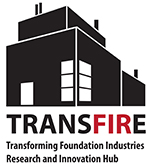Potential for energy savings and carbon dioxide emissions reduction in the cement industry
TransFIRe researchers have undertaken a literature review to compare cement production practices, in terms of energy consumption and CO2 emissions, in order to identify approaches that are the least energy and emissions intensive. Cement production accounts for 7% of global carbon dioxide emissions, 3 to 4% of green-house gas emissions, and 7% of global industrial energy use. Demand for cement is also continuously increasing due to the rising worldwide population and urbanisation trends, as well as infrastructure development needs, with a further global increase of 12- 23% from its current level expected by 2050. Following the net-zero carbon 2050 agenda, both energy and emissions must be significantly reduced and, in order to do so, it is essential to understand the manufacturing processes involved and the accompanying energy utilisation and CO2 emissions. The literature review considers both the different types of cement production routes and the different production stages involved, [...]





